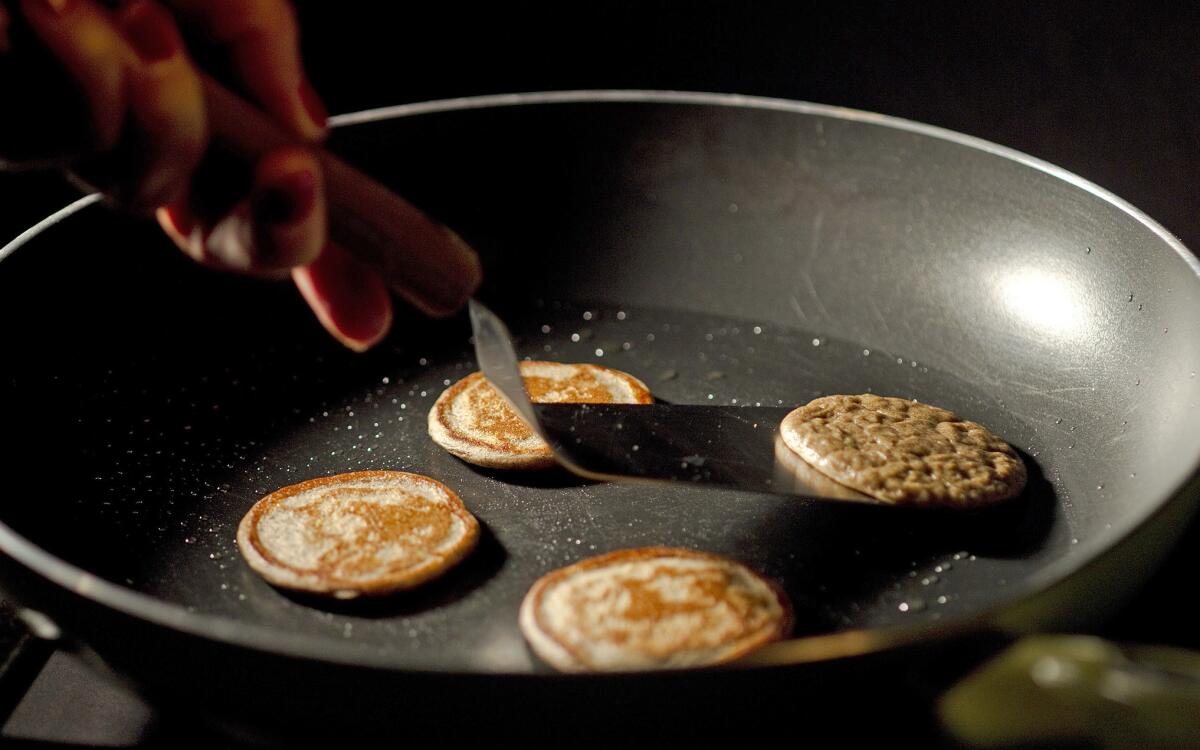Ossetra Caviar with Buckwheat and Buttermilk Blinis

Holiday meals tend to pass by in a blur of turkeys, hams, roast beef and sweet potatoes. How do you break through that to make an impression on your guests? Caviar is one sure cure. And it’s one that can be delivered on a range of budgets.
Though caviar is synonymous with luxury, opulence and indulgence, if you know what you’re doing it can still be served at a relatively modest price and still deliver the goods. There is a wide range of caviar products, and the trick is knowing which ones are best used in which situation.
For example, hackleback caviar is delicious, affordable and easily obtained. I like to serve it with avocados and Melba toast, which offers an interesting contrast of textures — the firm saline “pop” of the caviar, the creamy avocado and the crisp, wafer-thin toasts.
At the French Laundry and Per Se, we use California white sturgeon caviar, which is extremely high quality and is sustainably raised along the Sacramento River. This is what we use in my signature dish Oysters and Pearls. It is more expensive, so you want to serve it in a way that will show off the quality, such as using it as a topping for deviled eggs.
Another domestic caviar comes from the paddlefish, which is a close relative of sturgeon raised in the Southeast. It offers a tremendous bang for your buck, as the quality is very good but the price is affordable. A sunchoke panna cotta is the perfect foil for the caviar: It is rich, nutty, slightly sweet yet subdued enough to let the flavors of the caviar shine through. Even better, most of the dish can be prepared in advance and quickly finished at the last minute.
Pressed caviar is essentially a paste made from eggs that have been damaged and can no longer be sold as whole. While the texture and appearance of the caviar has been lost, the taste remains, making this an economical way to impart the flavor of caviar into a dish, such as when we use it as a stuffing for a confit of salmon.
And then, of course, there is the glory of Ossetra caviar, the best quality caviar that is commonly available. With an ingredient this special (and this costly), you really want to present it in the simplest way possible: buckwheat and buttermilk blini. It is incredibly simple yet sophisticated and allows the caviar to be at center stage. The contrast of textures and temperatures between the ice cold, briny caviar and the hot, buttery blini is indulgent perfection.
But please resist the urge to serve this with caviar garnishes such as minced onion, eggs and capers, no matter if they are considered classic. Caviar this good is best unadorned.
food@latimes.com
Begin making the blinis about 1½ to 2 hours before you want to serve. In a large mixing bowl, combine the buckwheat and all-purpose flours along with the salt. Set aside.
In a microwaveable mixing bowl, combine the buttermilk and cream, and heat in the microwave until barely warm (about 100 degrees), 60 seconds or so. Using a whisk, beat in the egg yolks, then sprinkle the yeast over the surface of the liquid. Set aside to give the yeast time to rehydrate for a couple of minutes, then whisk it into the liquid and set aside for 10 more minutes.
Make a well in the center of the dry ingredients. Pour the liquid into the well and gently whisk until it just comes together into a thick, cohesive batter, being careful not to overmix. Clean the sides of the bowl and cover with plastic wrap. Set aside in a warm place until the surface of the batter bulges and bubbles begin to form and burst, an hour or so (timing will vary depending on the temperature of the room).
In a separate bowl, beat the egg whites until they form medium peaks. Gently fold one-third of the egg whites into the batter with a rubber spatula until they are incorporated. Repeat this, folding a third of the egg whites at a time. Once the egg whites are incorporated, set the batter aside to rest for about five minutes before cooking the blinis.
For larger blinis, heat a well-seasoned steel or non-stick blini pan (3½-inch diameter) over medium heat. Add a generous spoonful of clarified butter to the pan, then ladle about one-fourth cup (2 ounces) of batter into the pan. Cook the blini until the bottom is golden brown and crisp and the top surface is bubbling. Use a palette knife or thin spatula to turn the blini over. Continue to cook the other side until brown and crisp. Remove the blinis from the pan and repeat the process. Alternatively, you can use a large nonstick pan to cook several small, half-dollar-sized blinis at a time.
Though it is best to eat the blinis straight out of the pan, you can place the blinis on a sheet pan in a single layer and keep them warm in the oven. When you are ready to serve, spread a liberal amount of the butter over the surface of the blini and place a generous quenelle or mound of the ice-cold ossetra caviar in the center. Serve immediately with Champagne. Any leftover batter should be made into blinis and then be frozen (they freeze well); otherwise, discard the batter as it will not work well the next day.
Get our Cooking newsletter.
Your roundup of inspiring recipes and kitchen tricks.
You may occasionally receive promotional content from the Los Angeles Times.















